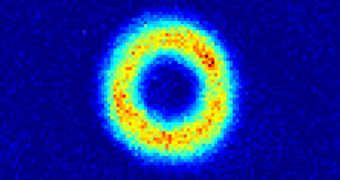A team of physics experts in the United States has brought the goal of producing atomtronic devices closer to reality than ever before. The circuits are nothing more than a wisp of gas floating around in a laser beam, but their purpose is to replace wires, silicon and electricity in conventional circuits.
According to the research team behind the new work, the new circuits function by literally choreographing the movement of atoms in this ultracold gas so that they flow in a defined manner.
The flow can also be turned on and off, and this makes the innovation all the more important. The devices built using this type of approach are called atomtronics, because they function at the level of single atoms.
At this point, this field of research is mostly theoretical, and still pretty much in its infancy. The idea here is to put atoms in unusual quantum states, and then use them as an alternative to electrons for powering up devices.
Everything from wires and batteries to transistors and diodes can be tuned so that they are powered by atoms rather than electrons, say investigators working in this new field of science.
The experts who conducted the new study hope to be able to create atomtronic sensors by using a state of matter called a Bose-Einstein condensate (BEC), which is in essence an ultracold gas.
Graduate student Anand Ramanathan is the leader of the research group, which is based in Gaithersburg, Maryland, at the Joint Quantum Institute (JQI), Science News reports. The team's approach will be published in an upcoming paper in the journal Physical Review Letters.
In the study, the experts detail how they used magnetic fields to suspend sodium atoms in the air, and then cooled the entire mix down to ultracold temperatures. A pair of crossed laser beams was then used to trap, and further cool, the sodium atoms.
The BEC was brought to a temperature less than 10 billionths of a degree above absolute zero. The condensate was modeled in the shape of a flattened donut, with a radius of about 20 micrometers.
“A lot of care was required in how we created the trap. We had to make it as smooth as possible to make sure that imperfections played a minimal role,” Ramanathan explains.
“This is the first time that someone has actually made a ring-shaped condensate. We’re hoping to use this condensate in much the way that superconductors have been used to make improved devices and sensors,” adds team member Gretchen Campbell.

 14 DAY TRIAL //
14 DAY TRIAL //